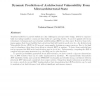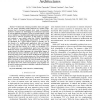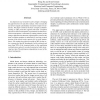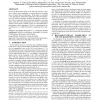55 search results - page 10 / 11 » Tolerating Radiation-Induced Transient Faults in Modern Proc... |
ISCA
2007
IEEE
14 years 1 months ago
2007
IEEE
Transient faults due to particle strikes are a key challenge in microprocessor design. Driven by exponentially increasing transistor counts, per-chip faults are a growing burden. ...
PDP
2011
IEEE
12 years 11 months ago
2011
IEEE
Abstract—Continuously reducing transistor sizes and aggressive low power operating modes employed by modern architectures tend to increase transient error rates. Concurrently, mu...
PRDC
2005
IEEE
14 years 1 months ago
2005
IEEE
An important issue in modern cache designs is bridging the gap between wire and device delays. This warrants the use of more regular and modular structures to mask wire latencies....
IEEECIT
2010
IEEE
13 years 6 months ago
2010
IEEE
With the increasing popularity of COTS (commercial off the shelf) components and multi-core processor in space and aviation applications, software fault tolerance becomes attracti...
DAC
2005
ACM
14 years 8 months ago
2005
ACM
Device and interconnect fabrics at the nanoscale will have a density of defects and susceptibility to transient faults far exceeding those of current silicon technologies. In this...




